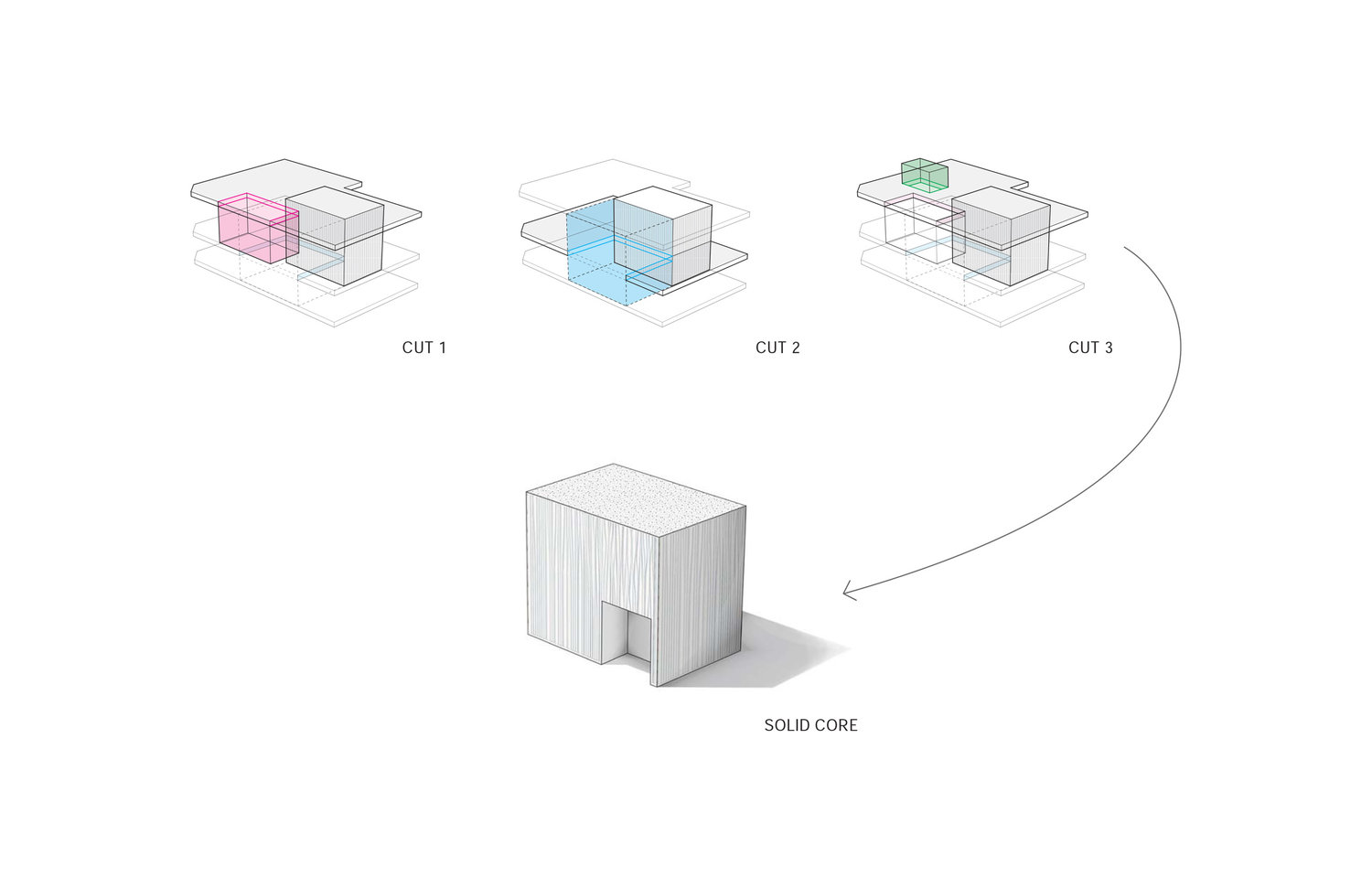



Pulled Plaster Loft
Architecture / Interiors
Tribeca (NYC),
New York
5,500ft² / 510m²
Completed 2015
Images /
Drawings /
Awards + Publications
Research:
Pulled Plaster Panels
The Pulled Plaster Loft occupies the top two floors and rooftop of an historic cast iron Tribeca building. The spatial concept explores shifting relationships of solid and void through the interplay of three distinct nested prisms.
At the entrance to the loft, a large courtyard opens the interior to the landscape, sky, and city. This initial void is subsequently revealed to be bounded by a larger cut through to the floor below, allowing the courtyard to be read as a floating glass mass bridging the east and west sides of the plan, and opening the section between floors. The larger cut also exposes the building’s service and stair core as a monolithic mass that grounds the choreography of void and solid dancing around it.
This core is clad in custom pulled plaster panels, a technique developed through the controlled collision of a centuries-old fabrication technique with contemporary design language. The project is formally restrained, but spatially provocative.
Photography by Naho Kubota
At the entrance to the loft, a large courtyard opens the interior to the landscape, sky, and city. This initial void is subsequently revealed to be bounded by a larger cut through to the floor below, allowing the courtyard to be read as a floating glass mass bridging the east and west sides of the plan, and opening the section between floors. The larger cut also exposes the building’s service and stair core as a monolithic mass that grounds the choreography of void and solid dancing around it.
This core is clad in custom pulled plaster panels, a technique developed through the controlled collision of a centuries-old fabrication technique with contemporary design language. The project is formally restrained, but spatially provocative.
Photography by Naho Kubota